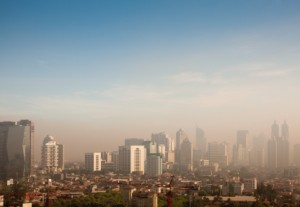Back in the 1950s, 1960s and 1970s, environmentalists warned of coming disaster. The air would soon become unbreathable, clean water would be as rare as unicorn dander. Didn’t happen. That these dire warnings failed to accurately predict our present-day circumstances is often cited as evidence that any similar such claims – about, say, climate change or peak oil – should be taken with more than a pinch of salt, if not outright ignored as the usual ravings of hyperventilating Cassandras.
 So why were those earlier prognosticators of doom wrong? Because they were right. Environmental degradation was a growing problem. Rivers actually were catching fire in these United States. Air quality in major metropolitan areas truly was bordering on the Dickensian. Acid really was falling from the skies as rain and a hole was opening in the ozone layer. By raising the issues with urgency, passion and creativity, environmentalists of the day were able to engage the larger public in these problems and build support for solutions: the Clean Water Act and the Clean Air Act, for instance.
So why were those earlier prognosticators of doom wrong? Because they were right. Environmental degradation was a growing problem. Rivers actually were catching fire in these United States. Air quality in major metropolitan areas truly was bordering on the Dickensian. Acid really was falling from the skies as rain and a hole was opening in the ozone layer. By raising the issues with urgency, passion and creativity, environmentalists of the day were able to engage the larger public in these problems and build support for solutions: the Clean Water Act and the Clean Air Act, for instance.
That public engagement and support for solutions helped ensure passage of legislation at the state and federal level that would guarantee those dire warnings of environmental Armageddon would not come true.
So, here we are again. Credible science and analysis points to real and pressing problems with the climate and energy supply. Dire warnings are being penned by those doing and as well as those interested in the science. Will their dystopian futures also fail to materialize? That, unfortunately, is an open question.
Unlike the 1950s, 1960s and 1970s, today’s Internet-driven communications environment makes confusion and apathy as easy to create as clarity and action. What will finally ensure that today’s doomsayers are as inaccurate as yesterday’s? Compelling stories.
Those seeking to compel the actions that will ultimately prove their prophecy wrong must recognize that, for humans, story trumps data. For scientists and engineers, good data tells a compelling story. But for most people, a metaphor works better.
With the science established and consequences beginning to play out, bridging that communication gap may well be the first and most important problem those seeking change will need to solve.